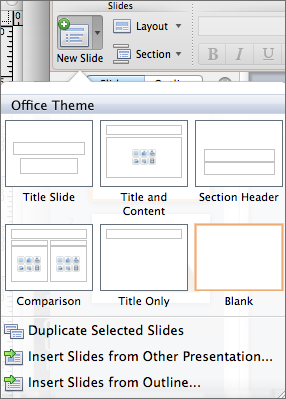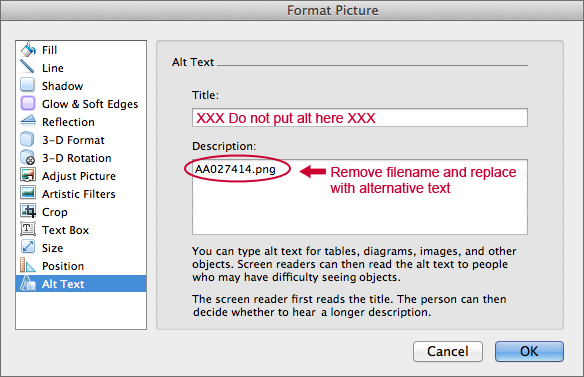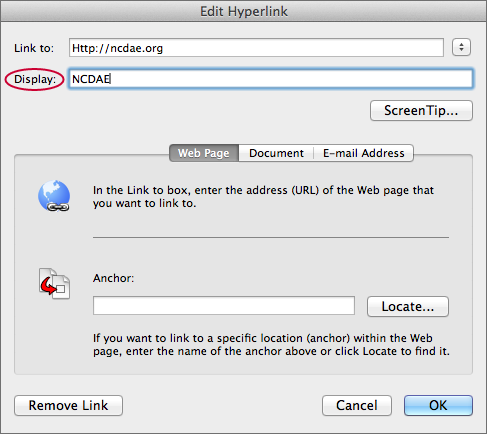Creating Accessible Microsoft PowerPoint 2011 Presentations (Mac)
This resource is designed to be printed as a one page PDF file. An HTML version is also available below.
Slide Layouts

Using slide layouts provided within PowerPoint will ensure that files have correctly structured headings and lists, and proper reading order.
Creating Slide Layouts
- Select Home > New Slide, or select the New Slide button from the default toolbar.
- Choose from the slide options menu the desired layout.
Alternative text for Images

Images can be given appropriate alternative text in PowerPoint. This text is read by a screen reader in a PowerPoint file and should remain intact when exporting to HTML or PDF.
- Right-click (or control + click) on the image and select Format Picture. A dialog box will appear.
- Select the Alt Text option in the sidebar.
- Remove the image filename from the Description field. This is a bug in PowerPoint for Mac.
- Enter appropriate alternative text to the Description field, not the Title field.
Data Tables
- PowerPoint can style rows and columns so they appear as data tables, but there is no way to add content in a way that will be identified by a screen reader.
- If your presentation contains more than the simplest tables, and if you have Adobe Acrobat, consider creating an accessible PDF and adding the additional accessibility information in Acrobat Pro.
Links

PowerPoint automatically creates a hyperlink when a user pastes a full URL onto a page. These may not make sense to screen reader users, so more information is needed.
Editing Hyperlinks
- Select a hyperlink, right click, and select Hyperlink > Edit Hyperlink or ⌘ + k.
- Change the URL in the Display field to a more meaningful description.
Outline and Notes Panels
PowerPoint contains two panels that can be used to enhance accessibility: the Outline panel and the Notes panel.
Outline Panel
- The Outline panel contains a text outline of the content that appears in your slides.
- Reviewing this panel can help ensure the content on the slides is logically sequenced, that slide titles are unique and meaningful,and that reading order is appropriate for any user.
Notes Panel
- The Notes panel allows the speaker to add notes and information that will not appear on the slides.
- Placing image or chart descriptions in this area should be avoided. This information may not be accessed by a screen reader, so use with caution.
Other Principles
- Ensure that font size is sufficient. If your presentation will be viewed on a projector, font size may need to be even larger.
- Provide sufficient contrast. If your presentation will be viewed on a projector, sometimes the contrast needs to be even more pronounced.
- Do not use color as the only way to convey content.
- Avoid automatic slide transitions.
- Use simple slide transitions when possible.
- Use simple language.
- Check reading order of text boxes that are not part of the native slide layout. They are usually the last thing read by a screen reader.
- If you have embedded video, ensure that the video is captioned, and that the player controls are accessible.
- If you have embedded audio, include a transcript.
- If your slides contain animations, ensure that they are brief and do not distract from the most important content on the page.

